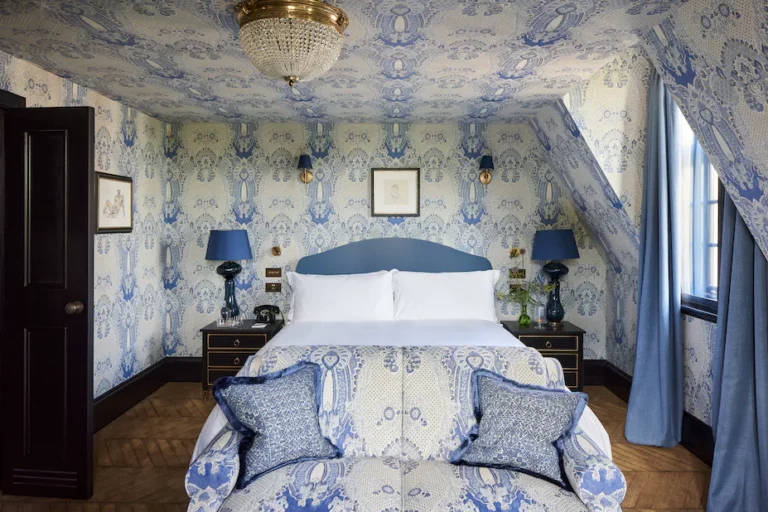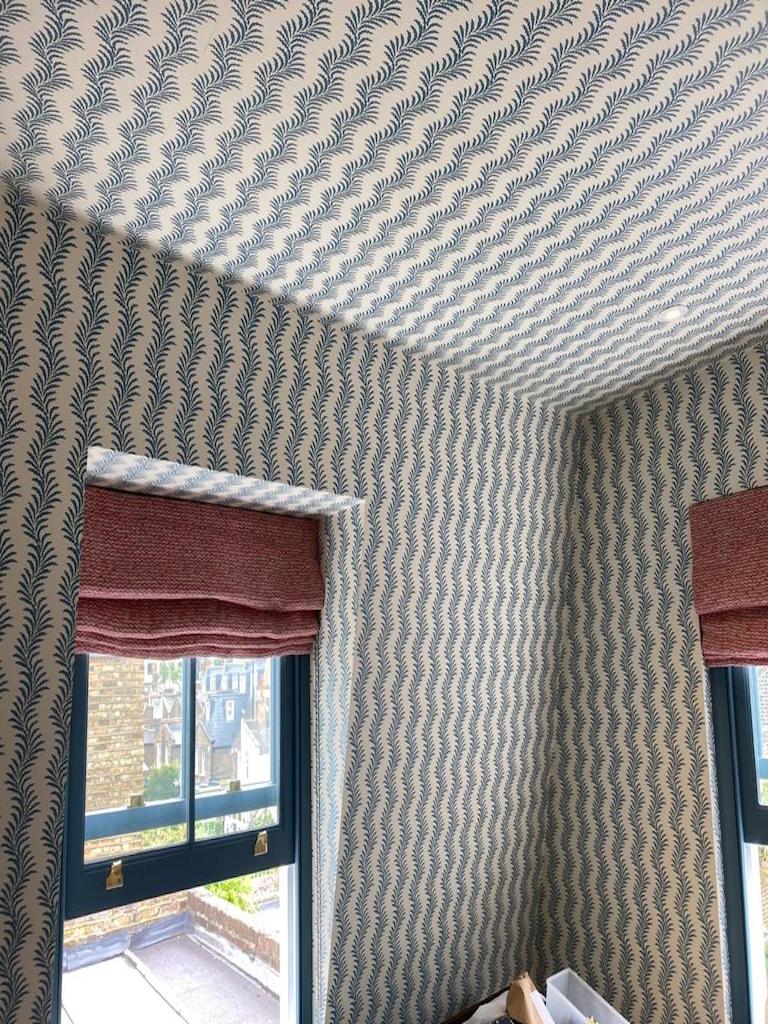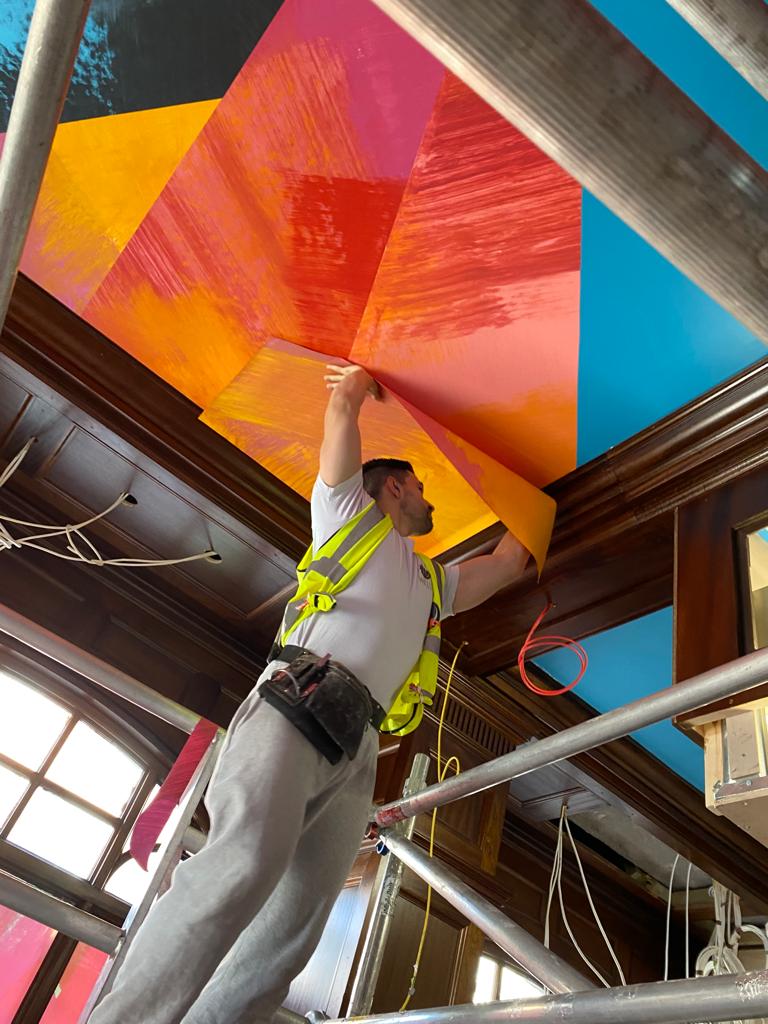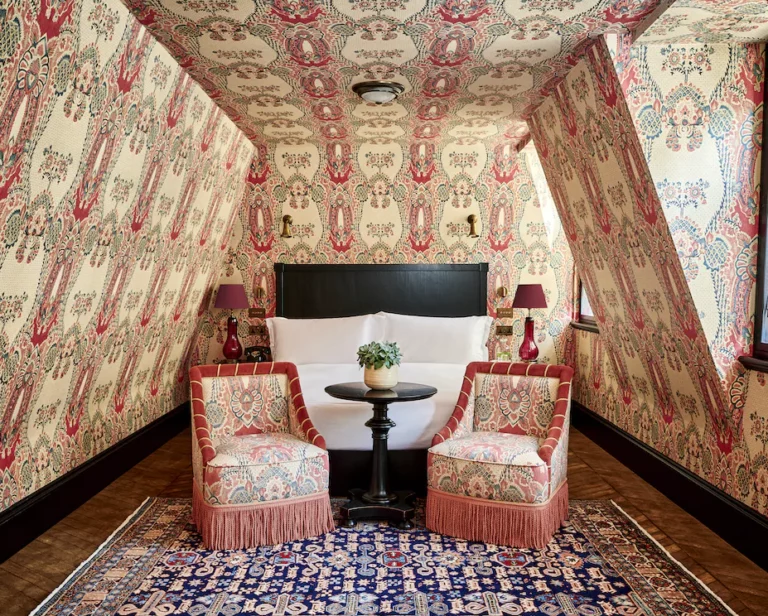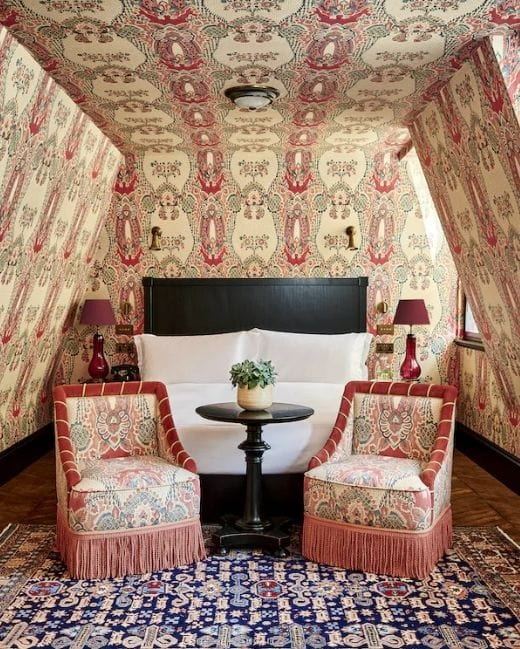Wallpapered ceilings
HOW TO WALLPAPER A CEILING
So, why would you wallpaper a ceiling? It’s purely for aesthetics, and we are big fans of the bold impact it makes.
It sounds obvious, but you need to make sure that you have enough wallpaper to do the ceiling. Treat it like a fifth wall, and just remember to mention it at the quantifying stage.
The difference and complexities of a ceiling over a wall is it can be awkward working above your head, and working against gravity. When you’re working on a ceiling you’re working above your head and naturally the wallpaper wants to fall away from the ceiling, which is why it’s so awkward. Apart from that, it is like a regular installation.
How high is the ceiling?
Let’s start with the rigging. You need to work out the best way to reach the ceiling. You may need scaffolding boards or a tower depending on how high the ceiling is and you want to make this as easy as possible. A good example is 5 Hertford Street, a private members club we did recently, where there were about 13 panels of de Gournay and we asked the site to essentially build a stage underneath the ceiling. It was built up about a metre off the ground like a false floor, so we could just walk around and get to the ceiling the whole time.
Depending on the paper you’re installing and the complexities of the ceiling, most of the time it’s a lot easier to have two installers. If it’s a small area you could rig up a T-pole, where the top of the ‘T’ takes the excess paper. The installer will hold the pole in one hand, and install with the other hand. This should come with a caution of a sore neck and that it’s actually really physically demanding. You don’t want to be doing ceilings like this every day of the week, trust us.
5 things to consider when wallpapering a ceiling…
- Another thing you need to get signed off by the client is the direction of the wallcovering. If it’s patterned or textured paper, you need to know the direction and does the client want to go lengthways or crossways? If someone is lying in bed looking up at the ceiling, how is it going to look?
- Make sure the first drop goes in ‘plum’ and take time to chalk your plum line correctly.
- There might be a kill point. If the wallpaper is patterned and the room is square or rectangular, there will be two sides where there isn’t a match. There is nothing you can do about this. It is what it is. But you need to make this clear and be transparent about it before starting to manage expectations. In The 22, we kept the pattern going up and over the bed.
- Get lights and hardwear removed off the ceiling beforehand, and put back on at the end.
- If you are doing the whole ceiling, you need to think about where you are going to set your tables up. You may require another space beside the room you’re installing in to set your tables up as they could get in the way. Again, it’s awkward if there isn’t enough space. You may have to do half the ceiling, move your stuff, then carry on.
Awkward is the key word with wallpapered ceilings. And remember.
Awkward = time = money
A VIDEO OF ONE OF OUR CEILING INSTALLATIONS
MORE EXAMPLES OF OUR CEILING INSTALLATIONS
